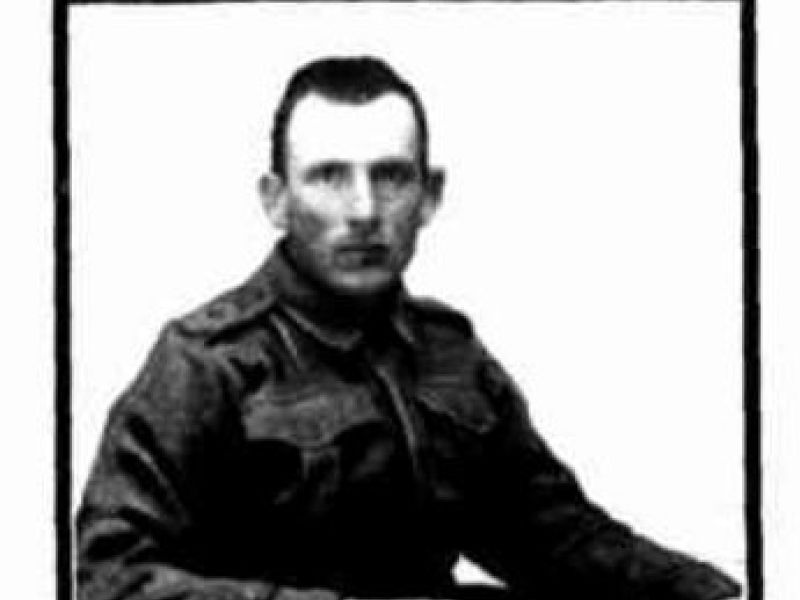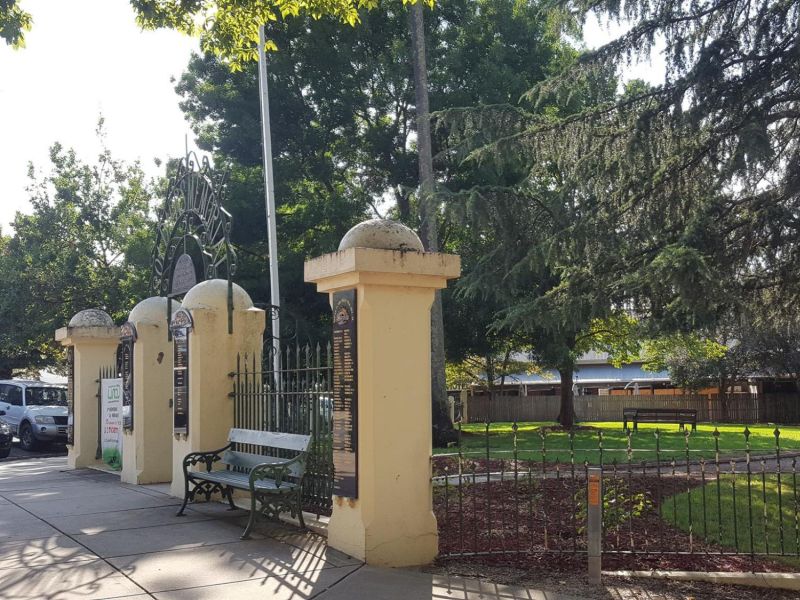William Anderson Maxwell
Will was born on the 29th of April, 1888. He was the fifth of ten children for George and Margaret (née Anderson) Maxwell. The family lived in the Yackandandah/Sandy Creek area where George was an engine-driver. When Will was 18 tragedy struck the close family. Two of his younger brothers, John and Edgar, were out shooting foxes when the gun misfired. John was examining the gun when somehow the cartridge exploded and he took the full force in his face. By the age of 21 Will was living at Derang working as a storeman.
Will chose to follow his father's profession and trained to become an engine driver but in Western Australia.
Will enlisted at Blackboy Hill in Western Australia on the 17th of September 1914, a little over six weeks since the war began. He was allocated the Regimental Number 1038 and placed in the 11th Battalion of the 3rd Brigade.
The 11 Battalion boarded HMAT A11 Ascanius on the 31st of October 1914. A and B Company of the Battalion embarked on HMAT A7 Medic. Will was aboard Ascanius, as part of the Headquarters Company. They waited for two days aboard the transport at anchor in Gage Roads, Fremantle, waiting for their escorts and the main convoy to arrive from Albany. The Ascanius arrived at Port Said on the 2nd of December 1914 arriving at Alexandria on the 6th of December. Once they disembarked they travelled by train to Giza and then marched into the main camp site at Mena.
In early January the 11th Battalion moved to Tel El Kabir, a training centre for the 1st AIF. The camp was situated 110 kilometres north-east of Cairo and 75 kilometres south of Port Said. As the troops underwent their training they often came across relics from the Battle of Tel El Kebir which was fought between Egyptian and British forces in 1882. Training occupied the men’s time and energy, 8 hours a day for 6 days of the week. Leave was often granted and many visited Cairo and Alexandria.
On the 1st day of March 1915 the battalion embarked on HMT Nizam at Alexandria. Although sealed orders containing their destination were not opened until they were at sea, many knew that they were eventually headed for the Dardanelles and the Gallipoli Peninsula. Four days later at 1100 hours they disembarked at Mudros on the Island of Lemnos.
The 11th Battalion landed on the beach at 0430 hours on the morning of the 2th of April. They were approximately 1 mile south of Fishermen’s Hut on the Gallipoli Peninsula. Their landing was met by “heavy musketry and machine gun fire” according to the battalion's diarist. Although the landing was disorganised, the battalion was able to push the Turks ¾ mile inland. It was impossible to get the battalion together as the men were engaged in small parties right along the whole line. By Monday morning they were able to establish a trench line and a line of defence. After eight days of fighting the 11th Battalion was down to a strength of 450 from more than 800 that had landed on the 25th.
On the 4th of May the 11th Battalion mounted the AIF’s first raid of the war against Turkish positions at Gaba Tepe. As a result, the battalion was heavily involved in defending the front line of the ANZAC beachhead. By August the battalion was still in the front line, occupying the trenches near Leane’s post.
Captain B.E. Bardwell, an officer in the same unit as Will, provides us with a description of the action in which Will was wounded.
“Early Friday morning Turks made an attack on Leane’s trench, the aforementioned one captured from them last week. … A bomb fight ensued and then part of “D” Coy. 15 + 16 platoons launched an attack from Tasmania Post and got badly cut up….
Leane’s post is open to fire from over a mile of Turkish trenches, in some places 2 lines and also field guns, result our chaps had an exceedingly bad time. In the end Turks were driven out. Word came that a party of Turks just down the slope, concealed were undermining the trench preparatory to blowing it up. Thirty men from 13 platoon under Lieut. Hall was ordered to drive them out at the point of bayonet. This was at about 9am. Before starting we knew that it was practically hopeless job and that we would be lucky if we got back alive…. We had to charge from Tasmania post over a wheat field for about 60 yards and then down the thick bushy slopes to where the Turks were working. As soon as we made our appearance “Hell” was let loose from Turkish trenches, machine guns and hundreds of rifles played on us also shrapnel.”
At some stage during this action Will was wounded by shrapnel which resulted in him having a compound fracture in his left thigh. Captain Bardwell was also wounded during this action. His diary provides us with a description of how Will and himself were taken from the battlefield to a waiting hospital ship.
“From Leane’s trench I was carried through tunnels and communicating trenches to the dressing station where my wound was dressed, placed on a stretcher and carried by Batn. bearers to another station where I was handed over to 4 bearers who carried me down to clearing station on beach, where I only waited an hour. Two barges were to take us out towed by a pinnace [a small steam powered boat]. As all stretcher accommodation was taken up I was propped on some boxes and had rather an unpleasant trip out owing to barge bumping against pinnace whole time. Hauled up on deck on a stretcher by winch and then carried below and placed in bunk and after a time had wound dressed.”
Will and Captain Bardwell were placed aboard the Hospital Ship Rewa and disembarked at Alexandria on the 6th of August. Bardwell writes in his diary that 60 men died during the trip from Mudros to Alexandria. Will became dangerously ill whilst in hospital, most likely developing gas gangrene as his wound became infectious. He succumbed to his wounds on the 8th of August 1915.
He was buried in Chatby War Memorial Cemetary, Egypt . He is also remembered on the Australian War Memorial Roll of Honour, and the Yackandandah Memorial Gardens. For his service during the war he was awarded the 1914-15 Star, the British War Medal, and the Victory Medal.

 Stephen Learmonth
Stephen Learmonth